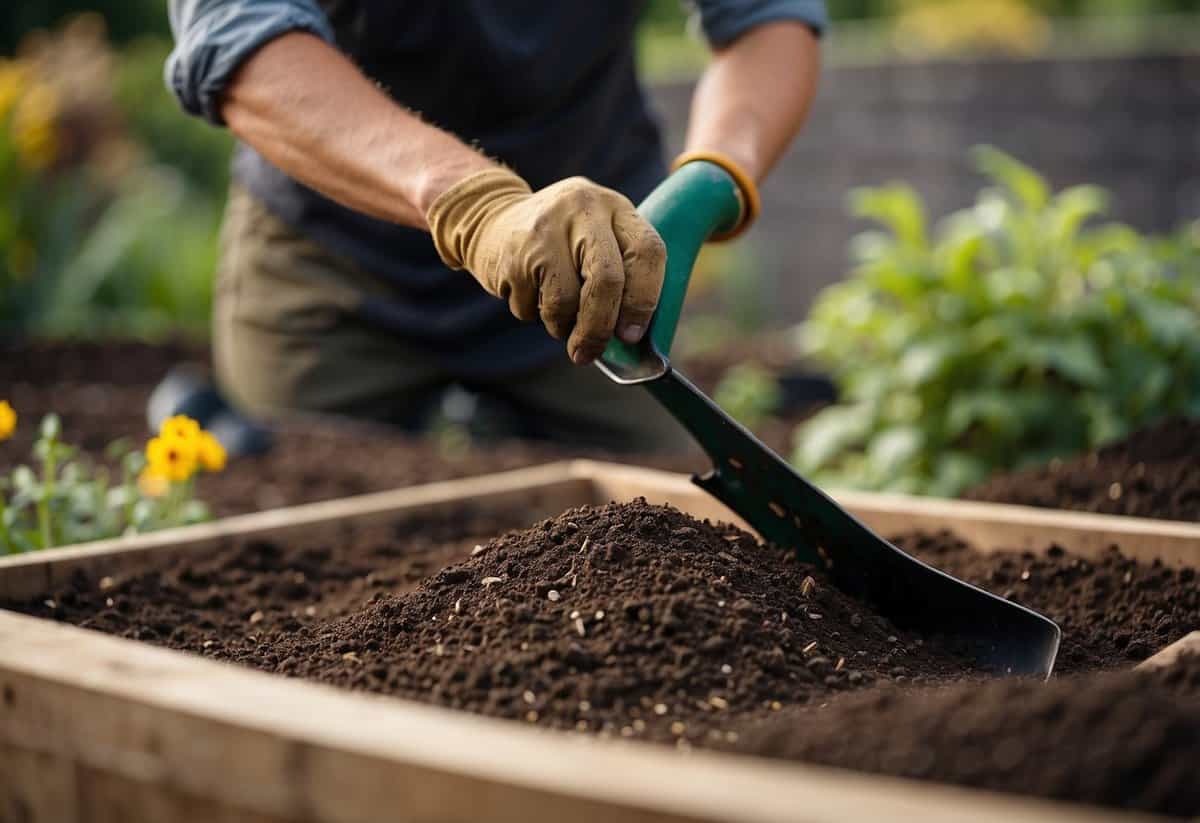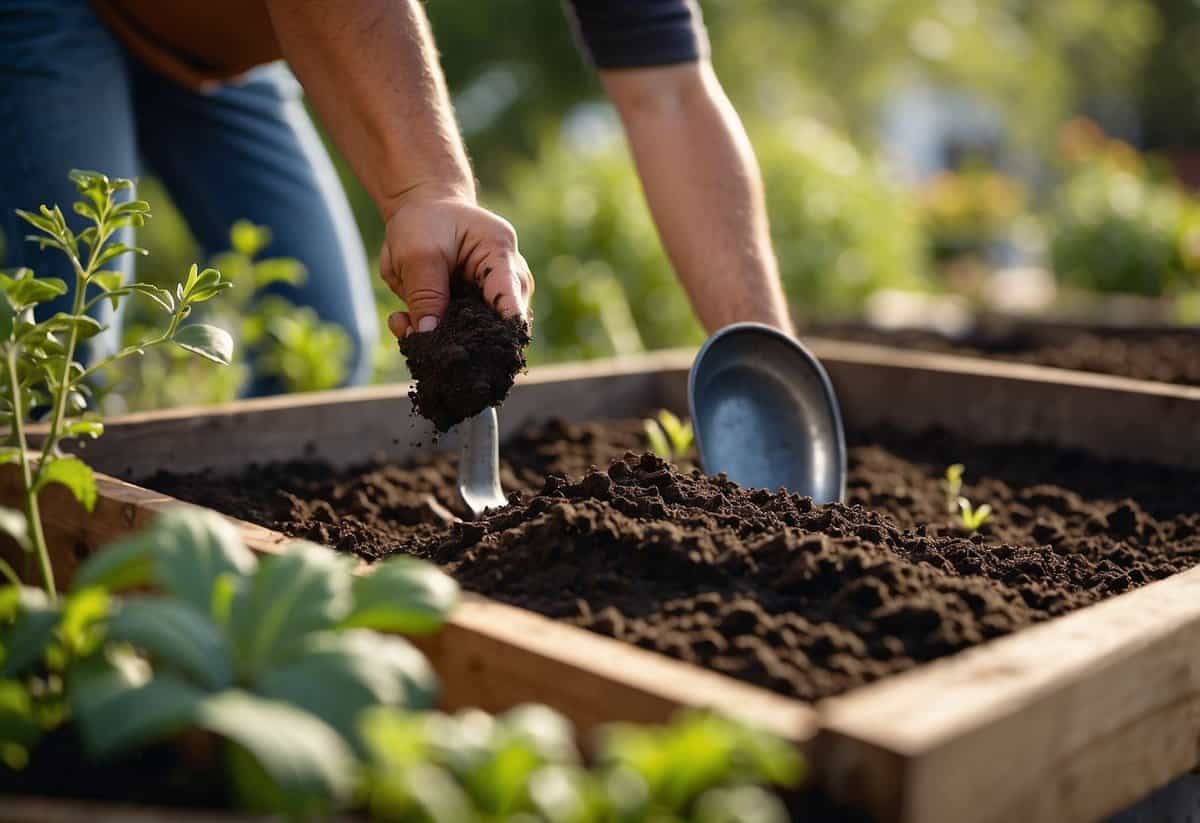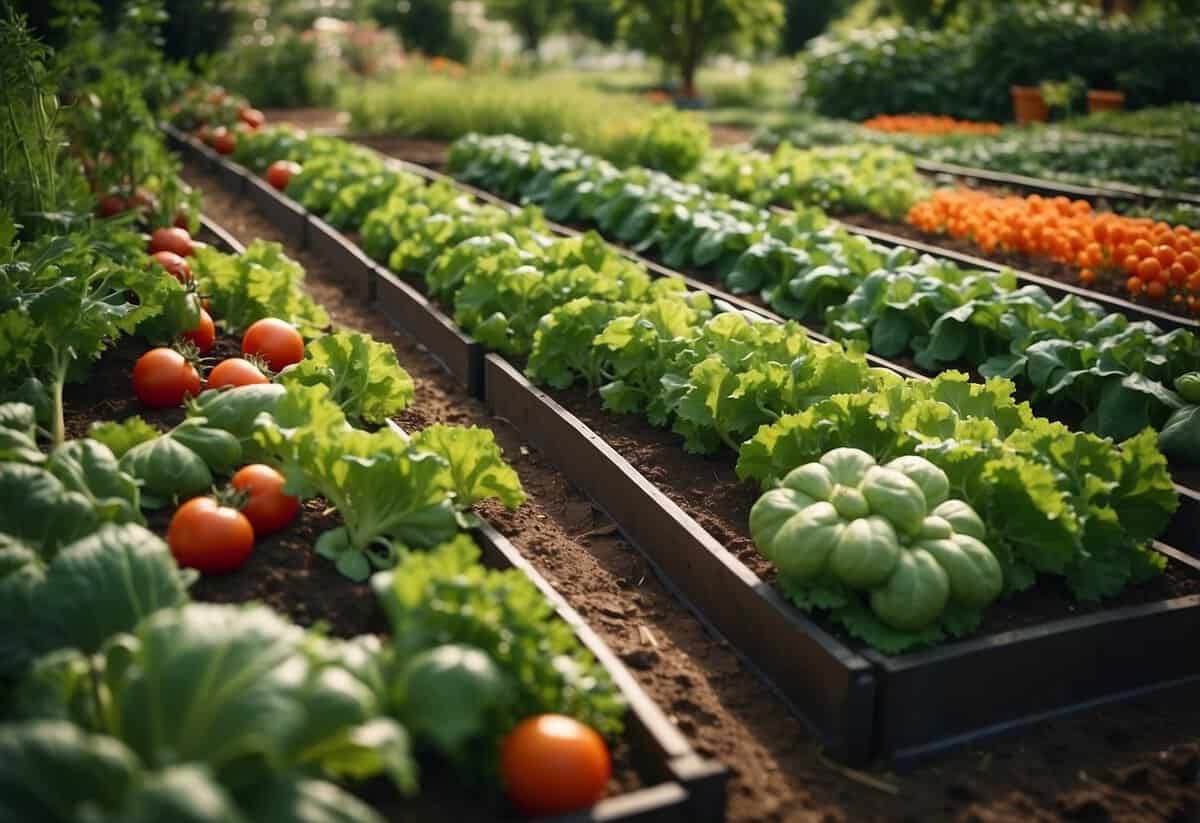Tips for Filling Raised Garden Beds: Easy Steps for Lush Growth
Starting a raised garden bed can be exciting. It’s a great way to grow your vegetables, herbs, or flowers. You might wonder how to fill your raised garden bed correctly.

Knowing the right materials and methods can make a big difference in your gardening success. Whether you’re new to gardening or have a green thumb, these tips will help you create a rich and healthy environment for your plants.
1) Choose Quality Soil

When filling a raised garden bed, start by choosing quality soil. Aim for a mix that includes about 75% topsoil and 25% compost. This mix provides a good balance of nutrients.
If your local topsoil is sandy, adjust the mix by adding more compost or a bit of clay. This helps your plants thrive.
For added nutrients, consider mixing in some well-rotted manure or leaf mold. These organic materials can boost soil quality.
This balanced approach ensures your plants have the best environment to grow healthy and strong.
2) Mix in Compost

Adding compost to your raised garden bed helps enrich the soil. It improves drainage and gives your plants the nutrients they need.
You can use a mix of 75% topsoil and 25% compost, or adjust slightly if your local soil is sandy.
Compost not only improves soil structure, but it also retains moisture. This means less watering for you!
3) Add Worm Castings

Worm castings are a fantastic addition to your raised garden beds. They are rich in nutrients and help improve soil structure.
To use worm castings, sprinkle ½ to 1 inch of castings on the top of the soil. Gently knead them into the soil and water lightly.
For established plants, apply a 2-3 inch layer around the base. Gently rake it in and water. This will give your plants a nutrient boost.
4) Use Layering Techniques

Layering your raised garden bed can help improve plant growth. Start by covering the bottom with cardboard or newspaper to stop weeds. Add a layer of coarse material, like twigs or straw, for drainage.
Next, add some ordinary garden soil or topsoil. For the top, mix compost with topsoil. This helps roots grow well and keeps the soil rich.
5) Incorporate Mulch

Adding mulch to your raised garden bed helps retain moisture and keep soil temperatures consistent. Mulch also reduces the growth of weeds, making your gardening chores easier.
Choose organic mulches like straw, wood chips, or shredded leaves. They break down over time, adding nutrients to your soil. Spread a 2-3 inch layer of mulch around your plants, but avoid piling it against the stems to prevent rot.
6) Add Perlite for Drainage

Perlite is a great addition to your raised garden bed to help with drainage. It is a type of volcanic glass that is heated until it expands. This creates tiny pockets that allow for air and water flow.
You should mix in around 10% perlite with your soil. This helps prevent water from pooling and keeps your plants’ roots healthy.
7) Use Organic Matter

Adding organic matter is crucial for a healthy raised garden bed. Materials like compost, well-rotted manure, and leaf mold are fantastic choices. They add nutrients that your plants need to grow strong and healthy.
Mixing organic matter into your soil improves its structure. This helps with water retention and drainage, making it easier for roots to spread. You might want to try a mix of 75% topsoil and 25% compost for the best results.
8) Include Peat Moss

Peat moss is a great addition to your raised garden bed. It helps with water retention, keeping the soil moist longer.
You should mix peat moss with your topsoil and compost. Usually, you can add about 10-20% peat moss to your soil blend.
Make sure to water the bed well after adding peat moss, as it can be quite dry at first.
9) Consider Cover Crops

Cover crops can boost your soil health. They add organic matter and help with soil aeration. For example, radishes are a good fall cover crop.
Consider planting buckwheat or peas and oats in a 50/50 mix. These crops improve soil structure and suppress weeds.
In spring, chop and drop the foliage onto the soil. Let the greens break down over winter, then plant your new crops in healthy, enriched soil.
10) Rotate Crops Annually

Rotating crops in your raised garden beds each year helps keep your soil healthy and reduces pest problems. By planting different types of vegetables in a new spot annually, you prevent pests and diseases from taking hold.
For example, you might plant tomatoes in one bed one year and switch to beans the next. This practice helps maintain soil fertility and keeps your garden productive.
If you want specific ideas for crop rotation plans, check out these strategies. You’ll find advice on what to plant and when, making it easier to create a rotation plan.
Understanding Soil Composition

When filling a raised garden bed, the type of soil you use is crucial. Good soil promotes healthy plant growth and can make a significant difference in your gardening success.
The Importance of Good Soil
Good soil provides the necessary nutrients for your plants. It helps retain the right amount of moisture and ensures proper drainage. Without good soil, plant roots may struggle, leading to poor growth or even plant death.
Healthy soil should be rich in organic matter. This helps improve the soil structure and promotes beneficial microorganisms. Consider adding compost or well-rotted manure to enhance the soil quality. These organic materials break down over time, continually nourishing your plants.
Using high-quality soil also means fewer weeds. Weeds are less likely to thrive in well-balanced, nutrient-rich soil. This reduces the time and effort you need to spend on weeding.
Choosing the Right Soil Mix
For raised garden beds, a mix of topsoil and compost is often recommended. A ratio of 75% topsoil and 25% compost provides a good balance. Topsoil is the uppermost layer of soil, rich in nutrients necessary for plant growth.
In areas where the local topsoil is sandy, adding some clay soil can help. Clay enhances the soil’s ability to retain water and nutrients. Alternatively, you can increase the compost to 30% to achieve better soil structure and nutrient content.
Adding well-rotted manure or leaf mold can further boost the soil’s fertility. These materials provide additional nutrients and improve soil texture. Just remember to mix everything well to ensure an even distribution of nutrients and properties throughout the bed.
Layering Techniques for Raised Garden Beds

When filling your raised garden beds, using proper layering techniques ensures that the soil retains moisture, drains well, and provides ample nutrients for plants to thrive. Two popular methods include the Lasagna Method and using organic materials.
The Lasagna Method
The Lasagna Method, also known as sheet composting, involves layering different organic materials to form a nutrient-rich bed for your plants. Start by laying down cardboard to smother weeds and grass. Next, add a layer of coarse materials like straw, chopped branches, or wood chips for drainage.
On top of the coarse layer, add alternating layers of green and brown materials. Green materials include kitchen scraps, grass clippings, and fresh leaves. Brown materials include dead leaves, shredded newspaper, and cardboard.
Each layer should be about 2-3 inches thick.
Using Organic Materials
Utilize organic materials to enhance the soil quality of your raised beds. Start by mixing topsoil and compost in a ratio of 75% topsoil to 25% compost. If your soil is sandy, adjust by increasing the compost to 30% or adding clay soil.
You can also mix in well-rotted manure or leaf mold to further boost nutrient levels. Avoid using chemical fertilizers as organic materials provide slow-releasing nutrients that are better for plant health.
Measure the volume of your raised bed and fill it to about 15% of the total depth with high-quality soil.







